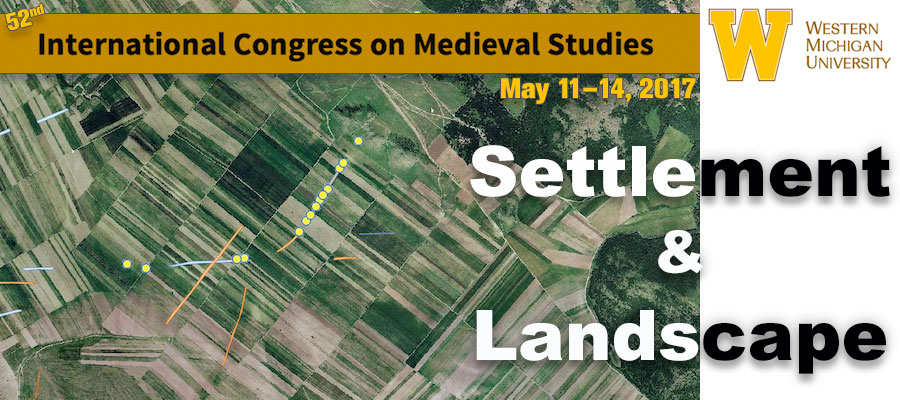Settlement and Landscape (I-II), session at the 52nd International Congress on Medieval Studies, Western Michigan University, May 11–14, 2017
Medieval settlement and landscape studies have combined theories and techniques from a variety of disciplines, most overtly those of history, archaeology and geography. Interdisciplinarity has to some extent become a buzzword in medieval studies, but it is an integral aspect of any successful academic study into settlements and landscapes.
Our first session, Settlement and Landscape I: Technological Approaches to the Medieval in the Modern, focuses on how archaeologists, historians, and geographers can use technology to understand the place of medieval settlements and landscapes in the modern world. These multidisciplinary approaches might include, but are not limited to, digital humanities and computer applications, such as GIS, Lidar, and 3D printing, but also scientific contributions (e.g. isotopes, palynology, limnology, and provenance analysis, to name but a few).
The second session, Settlement and Landscape II: Textual Approaches to the Medieval in the Modern, encourages a discursive space between the sciences, social sciences, and the humanities, focusing on textual approaches. Traditionally, the most interaction here has been between archaeology and history. We encourage submissions dealing with the uses of archival sources, digital scholarship, artistic works, literature, and epigraphy.
We are keen to incorporate perspectives from across Europe and beyond, especially when considering the modern heritage issues presented by these settlements and landscapes. A further benefit of working with physical places and spaces is providing a means of engaging with the public. Presenters are urged to consider this positioning of the medieval within the modern and to highlight the innovative contributions their research can make to this common experience.
Organizers
Vicky McAlister
Jennifer Immich
